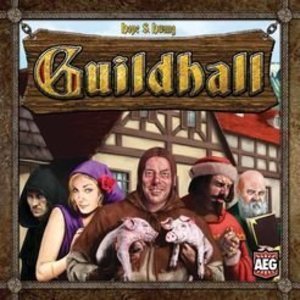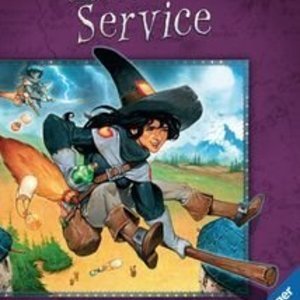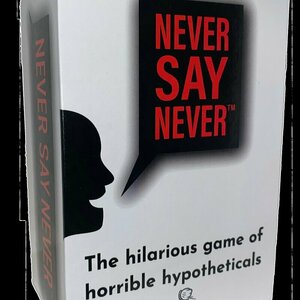Search
Search results
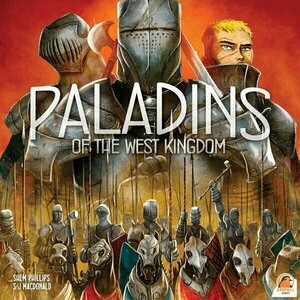
Paladins of the West Kingdom
Tabletop Game
Paladins of the West Kingdom is set at a turbulent time of West Francia's story, circa 900 AD....
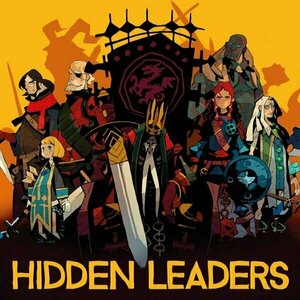
Hidden Leaders
Tabletop Game
The island of Oshra is in turmoil. Following the death of the Emperor, the conflict between the Hill...
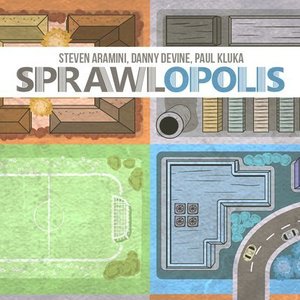
Sprawlopolis
Tabletop Game
Jackhammers chattering, trucks beeping, engines roaring, the sounds of construction are everywhere....
Purple Phoenix Games (2266 KP) rated Broom Service in Tabletop Games
Jun 24, 2021
A show of hands for all of us who have dressed for Halloween as a witch, wizard, druid, fairy, or the like. My hand is raised. How awesome would it be to actually have power to fly – even by broomstick? Or to make some excellent magic potions? Well daydream no more. Broom Service puts you into the world of flying witches and gathering druids and even Weather Fairies all to help your business deliver potions to towers and other buildings with magical tenants.
At its heart Broom Service is a trick-taking card game with pick-up-and-deliver mechanics flowing to the board. Each player will be attempting to supply the board’s towers and castles with magic potions, but they will need to craft them first. AND one does not simply HAVE potion ingredients handy – they need to gather the correct supplies. The winner of Broom Service is the player who best can supply areas of the board by claiming tricks to increase production of said potions.
To setup place the board in the middle of the table (I am waiting for a game to come along that asks you to place the board in the Northwest quadrant of the table or something similar). Populate the board with the proper Heavy Cloud tokens to be whisked away by players for points and access to additional board areas. Place player score tokens on 10 VP along the VP track. Shuffle the Event deck and randomly place seven cards in a draw pile, revealing one into the discard. Each player will receive their two witch hat pawns to be placed on the main castles, a deck of 10 role cards from which they will choose four each round, a set of one each of the three colors of potions, and magic wands per the rules. The game can now begin!
On a player’s turn they will choose one of their four role cards and place it face down in front of themselves. Once all have done this, the starting player will announce their chosen role and declare that they wish to be Cowardly or Brave. For instance, a player may say, “I am a Cowardly Fruit Gatherer” whilst revealing their role card. By declaring Cowardly, the player immediately performs the action on the bottom of the card for Cowardly Fruit Gatherers: produce one purple potion. In order to perform the actions on top of the card the player would need to declare that they are Brave. The player will not perform the action quite yet as now play continues to the next player in line who, if they also chose to play the Fruit Gatherer card, will declare if they will also be Brave. If so, the newest player to claim Brave will be essentially winning the Brave Fruit Gatherer trick. This continues around the table until the very last Brave Fruit Gatherer has declared and won the trick. The winning player then performs the action while all other previous Brave Fruit Gatherers receive NOTHING. Brutal.
The game continues in this fashion of players bidding on Brave roles for better results (as in the example, a Brave Fruit Gatherer is able to make two purple potions AND another potion of their choice) until players have played seven rounds. They then add up their points per the rule book and the winner is determined!
Now, this is a brief explanation of the trick-taking aspect of the game, but other roles actually allow players to deliver the potions made, and still others allow players to use their magic wands to whisk away Heavy Clouds for VPs and remove their board space blocking qualities. Each time a potion is delivered, the player will earn VPs. The trick-taking aspect is simply the gist and also crux of the game.
Components. I love the components in Broom Service. The board is nice and super colorful, with all areas easy to read and understand (though some players have issues with where the towers actually lie on the board, but you must look at which area the BASES of the towers touch to determine this). The cards have wistful artwork on them and the art throughout is stellar. The wooden witch hats and potions are all great, and I love the colors used on these – I mean, orange and purple go super well together. And then there’s green. All in all the components in Broom Service are just great.
That said, I give Broom Service excellent marks because it truly is a better implementation of its predecessor, Witch’s Brew, in almost every aspect (even though my wife disagrees). The art is better, the components are better, the addition of the board and its mechanics add so much to the game. I love being able to travel to different areas of the board to deliver items, and I really don’t have too many pick-up-and-deliver style games, so this really fills a niche in my collection. Also, on another personal note, Halloween happens to be my favorite holiday and Broom Service is certainly a game for that season. I am definitely not alone in my assessment of this one, as Purple Phoenix Games gives Broom Service a whooshy 14 / 18. Come at me on this one because I am defo a Brave Mountain Witch… or just a normal reviewer who likes this game a whole lot.
At its heart Broom Service is a trick-taking card game with pick-up-and-deliver mechanics flowing to the board. Each player will be attempting to supply the board’s towers and castles with magic potions, but they will need to craft them first. AND one does not simply HAVE potion ingredients handy – they need to gather the correct supplies. The winner of Broom Service is the player who best can supply areas of the board by claiming tricks to increase production of said potions.
To setup place the board in the middle of the table (I am waiting for a game to come along that asks you to place the board in the Northwest quadrant of the table or something similar). Populate the board with the proper Heavy Cloud tokens to be whisked away by players for points and access to additional board areas. Place player score tokens on 10 VP along the VP track. Shuffle the Event deck and randomly place seven cards in a draw pile, revealing one into the discard. Each player will receive their two witch hat pawns to be placed on the main castles, a deck of 10 role cards from which they will choose four each round, a set of one each of the three colors of potions, and magic wands per the rules. The game can now begin!
On a player’s turn they will choose one of their four role cards and place it face down in front of themselves. Once all have done this, the starting player will announce their chosen role and declare that they wish to be Cowardly or Brave. For instance, a player may say, “I am a Cowardly Fruit Gatherer” whilst revealing their role card. By declaring Cowardly, the player immediately performs the action on the bottom of the card for Cowardly Fruit Gatherers: produce one purple potion. In order to perform the actions on top of the card the player would need to declare that they are Brave. The player will not perform the action quite yet as now play continues to the next player in line who, if they also chose to play the Fruit Gatherer card, will declare if they will also be Brave. If so, the newest player to claim Brave will be essentially winning the Brave Fruit Gatherer trick. This continues around the table until the very last Brave Fruit Gatherer has declared and won the trick. The winning player then performs the action while all other previous Brave Fruit Gatherers receive NOTHING. Brutal.
The game continues in this fashion of players bidding on Brave roles for better results (as in the example, a Brave Fruit Gatherer is able to make two purple potions AND another potion of their choice) until players have played seven rounds. They then add up their points per the rule book and the winner is determined!
Now, this is a brief explanation of the trick-taking aspect of the game, but other roles actually allow players to deliver the potions made, and still others allow players to use their magic wands to whisk away Heavy Clouds for VPs and remove their board space blocking qualities. Each time a potion is delivered, the player will earn VPs. The trick-taking aspect is simply the gist and also crux of the game.
Components. I love the components in Broom Service. The board is nice and super colorful, with all areas easy to read and understand (though some players have issues with where the towers actually lie on the board, but you must look at which area the BASES of the towers touch to determine this). The cards have wistful artwork on them and the art throughout is stellar. The wooden witch hats and potions are all great, and I love the colors used on these – I mean, orange and purple go super well together. And then there’s green. All in all the components in Broom Service are just great.
That said, I give Broom Service excellent marks because it truly is a better implementation of its predecessor, Witch’s Brew, in almost every aspect (even though my wife disagrees). The art is better, the components are better, the addition of the board and its mechanics add so much to the game. I love being able to travel to different areas of the board to deliver items, and I really don’t have too many pick-up-and-deliver style games, so this really fills a niche in my collection. Also, on another personal note, Halloween happens to be my favorite holiday and Broom Service is certainly a game for that season. I am definitely not alone in my assessment of this one, as Purple Phoenix Games gives Broom Service a whooshy 14 / 18. Come at me on this one because I am defo a Brave Mountain Witch… or just a normal reviewer who likes this game a whole lot.
Purple Phoenix Games (2266 KP) rated The Road to Canterbury in Tabletop Games
Oct 4, 2021
I am not a sinless man. In fact, it’s been years since I’ve been to confession, and at this point I’m afraid I would be there for hours just spilling the beans. I know many pious people, but alas, I am not one. However, I do appreciate those that attempt to live that holy life. It takes a lot of guts and a lot of hard work. I guess I’m a little slothy when it comes to that, personally. Anyway, I know of the Seven Deadly Sins, Cardinal Sins, Capital Vices, or whatever you’d like to call them. In fact, I really like the movie Seven – I think it’s great! That said, let’s find out just “what’s in the box?”
The Road To Canterbury is a game of medieval hand management and area influence. In it players are false pardoners stalking the road to the city of Canterbury as pilgrims make their way there from London. As their companies run across these pardoners, they are offered the chance to purchase pardons – salvation and forgiveness for their sins. However, these pardoners are also keen to help the pilgrims along the path of sin, thus making their faux pardons worth even more money! The pardoner who ends the game with the most money will win along The Road to Canterbury.
DISCLAIMER: We were provided a copy of the Impoverished Pilgrim Edition (2nd edition) game for the purposes of this review. This is a retail copy of the game, so what you see in these photos is exactly what would be received in your box. I do not intend to cover every single rule included in the rulebook, but will describe the overall game flow and major rule set so that our readers may get a sense of how the game plays. For more in depth rules, you may purchase a copy online or from your FLGS. -T
To setup, follow the rulebook, as there are many components to track. The main areas are the Circle of Sin mat that holds the Parson pawn, the decks area that hold the various decks of cards from which players will be drawing, and each player’s personal area where players will hide their earnings and hand of cards behind the privacy screen. Once all is setup somewhat correctly, it should look similar to the photo below. Warning: When I set this up and took the photo, I neglected to realize the red company and the map tiles were translated to the wrong spaces, so just switch those.
The Road to Canterbury is a game of rounds, and each round players will be taking similar steps: Play One Card, Redraw, Perform a Reckoning of Sin. Players will have access to three different types of cards that can be played during the Play One Card phase: Sin cards (five of which are dealt at setup), Pardon cards, and Relic cards. During this phase, the active player can play a Sin card to one of the active Pilgrims to tempt them towards committing that sin. The first time the player adds a Sin card to a Pilgrim, they place one of their corruption cubes on the matching sin on the Circle of Sin. Alternatively, they may play a powerful Relic card that offers adjustments to the rules, or has some interesting results. When a player feels that enough Sin cards of a specific type have been played on a Pilgrim, they may opt to play a matching Pardon card in order to gain precious coin to their pockets. Each Pardon card essentially pardons ALL the sins of that type on the Pilgrim, and the player then collects coins exponentially for a larger total of matching Sin cards on that Pilgrim. If the Parson is currently sitting on the matching sin, the pardoner receives extra coin for it being an especially egregious sin in the eyes of the church. Each time the Pilgrim is pardoned, the pardoner places one of their corruption cubes upon the Pilgrim.
After the active player has played their card, they must Redraw their hand back to five cards, choosing to draw from the Sin, Pardon, or Relic offerings. Some Sin cards may be drawn that are Death Approaches cards. When these surface, they are immediately attached to the Pilgrim whose color matches that of the drawn card’s border color. This essentially eats up a slot on the Pilgrim that could be used for a Sin card to be pardoned.
Once the player has redrawn cards to their hand they must next Perform a Reckoning of Sin. The active player assesses each active Pilgrim to see if they have seven or more cards attached to them. If so, that Pilgrim will perish from the “deadly” sins. Whichever player has placed the most number of corruption cubes upon the Pilgrim is considered present at time of death and will receive credit for the sending to the heavens. They move one of the cubes upon the Pilgrim to the first space on the map tile, earning bonus points and a Last Rites token. Last Rites may be performed immediately to take another turn, or may be held until the end of the game for a 3 VP bonus per token. The most interesting aspect of a Pilgrim dying is the fact that their card now becomes a permanent placeholder underneath their company’s colored banner. So the next Pilgrim to enter play for that company will need only six additional cards to kick the bucket, and so on.
Play continues in this fashion of players taking turns through their three phases. The game ends when all the spaces on the map tile are filled with cubes. Bonus points are counted, coins are added, and the player with the most money/highest score is the winner! The best temptress and pardoner this side of Yorkshire!
Components. I have no experience with the first edition of The Road to Canterbury, so unfortunately I cannot compare and contrast components. However, I have seen many photos and even checked out a review video or two. What I can say about components is that this edition has refreshed the look of nearly everything, and so much for the better. Instead of boring plain cards, there’s just a little more decoration. Not so much to be invasive or distracting, but very tasteful. The component quality throughout is quite stellar. There’s a lot of cardboard in this box, and it all looks and feels great. I do quite like the art style, even though it’s all medievall-y and too artsy for my normal preference. All in all a great quality box of game.
So like I said, I have no experience with this game prior to receiving it and playing through it now. It certainly doesn’t feel like a 10-year-old game, nor does it really feel like many of the Alf Seegert games I have played in the past. Neither of these points are bad at all, just some thoughts I had.
It should be obvious by my ratings graphic that I dig this game a lot. I have nothing like it in my collection, and I am super excited to really bring this out with different types of gamers to see how it fares (once the COVID is no longer an issue, of course). I see this being a hit with my family, who enjoys a lot of take that style games. I see this being a hit with my more thinky gamer friends, because there are just so many juicy choices to be had every turn. I can see this even being a hit with my more gateway friends, because it isn’t terribly heavy, has some humor in it, and I can see the prospect of sowing sin and killing off innocent Pilgrims being attractive to some of my more morbid friends.
For me, I love the ability to take every turn and make important decisions. I try to make every turn meaningful to my agenda, but tactical with what may be at my disposal at the time. When should I play this Relic? Why is named something ridiculous? Should I wait a while longer to pardon this sin, or should I pile on another and then pardon next turn? Ooh, but what if my opponent has the same Pardon card. Am I truly happy that this poor Wife of Bath is about to kick it? GAAHHHHH!
Now it’s no secret that I am a big fan of Dr. Seegert’s games, as I have previously reviewed Fantastiqa and Haven with very high ratings. So, I was not at all surprised that I would love this one as well. It offers so many great choices, looks great on the table, fills a unique void that was present in my collection, and can be played with various types of gamers, even though it is designed for two or three players total. Purple Phoenix Games gives this one an unapologetic 5 / 6. I don’t think it will break into my Top 10, but I certainly won’t rule it out quite yet. More plays with different types of gamers may change my mind on that statement, and I eagerly await my plateful of crow. So if you are like me in your gaming preferences, check out this version of The Road to Canterbury. Let me know how often you tend to grab Relics too, because I feel like I need to utilize them more, but it is so hard to pass up a Sin or Pardon. I Lust after them so very badly.
The Road To Canterbury is a game of medieval hand management and area influence. In it players are false pardoners stalking the road to the city of Canterbury as pilgrims make their way there from London. As their companies run across these pardoners, they are offered the chance to purchase pardons – salvation and forgiveness for their sins. However, these pardoners are also keen to help the pilgrims along the path of sin, thus making their faux pardons worth even more money! The pardoner who ends the game with the most money will win along The Road to Canterbury.
DISCLAIMER: We were provided a copy of the Impoverished Pilgrim Edition (2nd edition) game for the purposes of this review. This is a retail copy of the game, so what you see in these photos is exactly what would be received in your box. I do not intend to cover every single rule included in the rulebook, but will describe the overall game flow and major rule set so that our readers may get a sense of how the game plays. For more in depth rules, you may purchase a copy online or from your FLGS. -T
To setup, follow the rulebook, as there are many components to track. The main areas are the Circle of Sin mat that holds the Parson pawn, the decks area that hold the various decks of cards from which players will be drawing, and each player’s personal area where players will hide their earnings and hand of cards behind the privacy screen. Once all is setup somewhat correctly, it should look similar to the photo below. Warning: When I set this up and took the photo, I neglected to realize the red company and the map tiles were translated to the wrong spaces, so just switch those.
The Road to Canterbury is a game of rounds, and each round players will be taking similar steps: Play One Card, Redraw, Perform a Reckoning of Sin. Players will have access to three different types of cards that can be played during the Play One Card phase: Sin cards (five of which are dealt at setup), Pardon cards, and Relic cards. During this phase, the active player can play a Sin card to one of the active Pilgrims to tempt them towards committing that sin. The first time the player adds a Sin card to a Pilgrim, they place one of their corruption cubes on the matching sin on the Circle of Sin. Alternatively, they may play a powerful Relic card that offers adjustments to the rules, or has some interesting results. When a player feels that enough Sin cards of a specific type have been played on a Pilgrim, they may opt to play a matching Pardon card in order to gain precious coin to their pockets. Each Pardon card essentially pardons ALL the sins of that type on the Pilgrim, and the player then collects coins exponentially for a larger total of matching Sin cards on that Pilgrim. If the Parson is currently sitting on the matching sin, the pardoner receives extra coin for it being an especially egregious sin in the eyes of the church. Each time the Pilgrim is pardoned, the pardoner places one of their corruption cubes upon the Pilgrim.
After the active player has played their card, they must Redraw their hand back to five cards, choosing to draw from the Sin, Pardon, or Relic offerings. Some Sin cards may be drawn that are Death Approaches cards. When these surface, they are immediately attached to the Pilgrim whose color matches that of the drawn card’s border color. This essentially eats up a slot on the Pilgrim that could be used for a Sin card to be pardoned.
Once the player has redrawn cards to their hand they must next Perform a Reckoning of Sin. The active player assesses each active Pilgrim to see if they have seven or more cards attached to them. If so, that Pilgrim will perish from the “deadly” sins. Whichever player has placed the most number of corruption cubes upon the Pilgrim is considered present at time of death and will receive credit for the sending to the heavens. They move one of the cubes upon the Pilgrim to the first space on the map tile, earning bonus points and a Last Rites token. Last Rites may be performed immediately to take another turn, or may be held until the end of the game for a 3 VP bonus per token. The most interesting aspect of a Pilgrim dying is the fact that their card now becomes a permanent placeholder underneath their company’s colored banner. So the next Pilgrim to enter play for that company will need only six additional cards to kick the bucket, and so on.
Play continues in this fashion of players taking turns through their three phases. The game ends when all the spaces on the map tile are filled with cubes. Bonus points are counted, coins are added, and the player with the most money/highest score is the winner! The best temptress and pardoner this side of Yorkshire!
Components. I have no experience with the first edition of The Road to Canterbury, so unfortunately I cannot compare and contrast components. However, I have seen many photos and even checked out a review video or two. What I can say about components is that this edition has refreshed the look of nearly everything, and so much for the better. Instead of boring plain cards, there’s just a little more decoration. Not so much to be invasive or distracting, but very tasteful. The component quality throughout is quite stellar. There’s a lot of cardboard in this box, and it all looks and feels great. I do quite like the art style, even though it’s all medievall-y and too artsy for my normal preference. All in all a great quality box of game.
So like I said, I have no experience with this game prior to receiving it and playing through it now. It certainly doesn’t feel like a 10-year-old game, nor does it really feel like many of the Alf Seegert games I have played in the past. Neither of these points are bad at all, just some thoughts I had.
It should be obvious by my ratings graphic that I dig this game a lot. I have nothing like it in my collection, and I am super excited to really bring this out with different types of gamers to see how it fares (once the COVID is no longer an issue, of course). I see this being a hit with my family, who enjoys a lot of take that style games. I see this being a hit with my more thinky gamer friends, because there are just so many juicy choices to be had every turn. I can see this even being a hit with my more gateway friends, because it isn’t terribly heavy, has some humor in it, and I can see the prospect of sowing sin and killing off innocent Pilgrims being attractive to some of my more morbid friends.
For me, I love the ability to take every turn and make important decisions. I try to make every turn meaningful to my agenda, but tactical with what may be at my disposal at the time. When should I play this Relic? Why is named something ridiculous? Should I wait a while longer to pardon this sin, or should I pile on another and then pardon next turn? Ooh, but what if my opponent has the same Pardon card. Am I truly happy that this poor Wife of Bath is about to kick it? GAAHHHHH!
Now it’s no secret that I am a big fan of Dr. Seegert’s games, as I have previously reviewed Fantastiqa and Haven with very high ratings. So, I was not at all surprised that I would love this one as well. It offers so many great choices, looks great on the table, fills a unique void that was present in my collection, and can be played with various types of gamers, even though it is designed for two or three players total. Purple Phoenix Games gives this one an unapologetic 5 / 6. I don’t think it will break into my Top 10, but I certainly won’t rule it out quite yet. More plays with different types of gamers may change my mind on that statement, and I eagerly await my plateful of crow. So if you are like me in your gaming preferences, check out this version of The Road to Canterbury. Let me know how often you tend to grab Relics too, because I feel like I need to utilize them more, but it is so hard to pass up a Sin or Pardon. I Lust after them so very badly.
Purple Phoenix Games (2266 KP) rated Fossilis in Tabletop Games
Feb 17, 2021
Whether it lasted for days, months, or years, I’m willing to bet that you all have had some minor (or maybe even major) fascination with dinosaurs at some point in your life. I am definitely no exception to that statement. When I was younger, I absolutely went through a paleontology phase, and the “Jurassic Park” movies have kept that love of dinosaurs alive. So when I saw KTBG was coming out with a game about excavating dinosaur bones, I was immediately sold. Did it live up to my childhood expectations, or was this excavation a bust?
Fossilis is a game of set collection and tile placement in which players are working to excavate and collect sets of dinosaur bones for display in museums across the world. To setup for a game, prepare the dig site as described in the rulebook. Populate the Score Track board with 9 random Skill tokens, 3 face-down randomly selected Event cards, and a Plaster pool based on the player count. Create a Market of Tool and Supply cards, as well as a Dinosaur Display. Each player receives a mat, Paleontologist meeple, and score marker in their chosen color. Pick a starting player, and in reverse turn order, players place their Paleontologists onto a corner tile of the dig site. The game is now ready to begin!
Every players’ turn has 3 steps: Actions, Market, and Lab. At the start of your turn, you have 4 Energy to spend on Actions. The available action choices are: Gain 1 Plaster (from the Plaster pool), Move up to 2 spaces (orthogonally or diagonally), Climb onto the Dig Site (if your Paleontologist was knocked off the board), Place 1 Sand tile (anywhere on the Dig Site), Dig 1 tile (slide a terrain tile 1 space in any direction), or Extract (excavate a bone/hammer). With the exception of Digging, all other Actions cost 1 Energy to perform. Digging 1 tile costs energy dependent on the type of terrain tile being moved. To dig Sand is 1 Energy, Clay is 2, and Stone is 3. To Dig, you select 1 tile that is orthogonally adjacent to your Paleontologist, and slide it 1 space in any direction you wish. Tiles that are pushed off the edge are claimed by that player, and can be used to purchase cards from the Market. It is possible for a Paleontologist to be pushed off the Dig Site, so watch out! To perform the Extract action, you will excavate a bone or hammer from an open pit orthogonally adjacent to your Paleontologist. Extraction costs Plaster dependent on the type of bone being collected. For example, extracting a tooth costs 2 Plaster, while a skull costs 6. Extracting hammers has no cost, and you immediately trade the hammer for one of the available Skill tokens in play. The Skill tokens provide benefits for the remainder of the game. Once a player has spent their Energy, they move to the next phase.
On your turn, you may buy 1 card from the Market: either a Tool or Supply card. These are purchased using the icons on any tiles you collected during the Action phase. Supply cards gain you immediate resources, while Tool cards are saved for use during a future Action step. After the Market phase is the Lab phase. You may claim a Dinosaur from the Display if you have at least one of the required bones for that Dinosaur. You can only ever have 1 Dinosaur in your Lab at a time, so strategize carefully. At any point during a turn, you can score the Dinosaur in your lab – either for full points if all required bones are present on the card, or partial points if you only have some of the required bones.
Events are triggered 3 times throughout the game when the Plaster pool has been depleted. The active player draws the top Event card, and follows the instructions on the card. Once an Event has been performed, the Plaster pool is refilled and play continues with the next player. After the 3rd event has been triggered, the Plaster pool is refilled one last time. When the last Plaster pool is depleted for this final time, the game ends. Players count up all their points, and the player with the highest score wins!
At first it may seem overwhelming, like there is a lot going on, but after a couple of turns the gameplay feels intuitive and streamlined. There are quite a few aspects to keep track of, but the overall flow of the game makes it feel clear and concise. During my plays, I have never once felt lost or confused as to what the next turn step is. The tight gameplay also lends itself to providing a variety of strategic options for players. Do you want to go for all the highest-scoring Dinosaurs, even though their bones take longer to collect? Or maybe you want to snag as many lower-scoring Dinosaurs as possible, since they should be faster to collect. You can earn end-game points based on Characteristic sets of Dinosaurs (carnivorous, herbivore, etc), so maybe you decide to focus on those sets. Or if you’re in a particularly confrontational mood, maybe you want to knock opposing Paleontologists off the Dig Site, causing them to ‘waste’ an Energy on a future turn just to climb back on into the play area. There really is no right answer as to what strategy is a sure-win, and I like that I can choose and adapt my strategies based on the current standings in the game.
Probably my favorite innovative mechanic in Fossilis is the 3D terrain and ‘digging’ actions. When setting up the game, bones and hammers are randomly scattered and distributed around the Dig Site before terrain tiles are added. So there is absolutely no way to know where you should dig for what you want! Just like a real paleontologist, you’ve got to give it your best guess. I have had some frustrating turns, spending lots of Energy to dig a tile just to find the space to be empty! Or maybe you dig and hit the motherlode, which just means you’ll probably have to fight off other paleontologists for the bones that you need. The 3D board adds another element of strategy that heightens the gameplay and makes it more immersive.
Let’s touch on components for a moment. They are AWESOME. Admittedly, I have the Kickstarter version, but I just love how well-produced this game is. The terrain tiles are nice and thick bakelite-esque tiles, and they are just dang fun to manipulate. The plaster and bones are small, but pretty detailed and sturdy for their size. The artwork on the cards is colorful and clear, the Paleontologist meeples are cute little wooden bits, and the cardboard bits are all good quality. Excellent production quality all around.
It should come as no surprise, based on my score, that I love this game. The gameplay is immersive and engaging, the mechanics add a neat twist to your normal set collection/tile placement game, and the ability to adapt strategy on the fly means that nobody is truly out of the game because of one bad turn. Purple Phoenix Games gives Fossilis a roaring 11 / 12. If you’re looking for a good dinosaur game, look no further. Yeah, they’re technically just bones here, but it still counts!
Fossilis is a game of set collection and tile placement in which players are working to excavate and collect sets of dinosaur bones for display in museums across the world. To setup for a game, prepare the dig site as described in the rulebook. Populate the Score Track board with 9 random Skill tokens, 3 face-down randomly selected Event cards, and a Plaster pool based on the player count. Create a Market of Tool and Supply cards, as well as a Dinosaur Display. Each player receives a mat, Paleontologist meeple, and score marker in their chosen color. Pick a starting player, and in reverse turn order, players place their Paleontologists onto a corner tile of the dig site. The game is now ready to begin!
Every players’ turn has 3 steps: Actions, Market, and Lab. At the start of your turn, you have 4 Energy to spend on Actions. The available action choices are: Gain 1 Plaster (from the Plaster pool), Move up to 2 spaces (orthogonally or diagonally), Climb onto the Dig Site (if your Paleontologist was knocked off the board), Place 1 Sand tile (anywhere on the Dig Site), Dig 1 tile (slide a terrain tile 1 space in any direction), or Extract (excavate a bone/hammer). With the exception of Digging, all other Actions cost 1 Energy to perform. Digging 1 tile costs energy dependent on the type of terrain tile being moved. To dig Sand is 1 Energy, Clay is 2, and Stone is 3. To Dig, you select 1 tile that is orthogonally adjacent to your Paleontologist, and slide it 1 space in any direction you wish. Tiles that are pushed off the edge are claimed by that player, and can be used to purchase cards from the Market. It is possible for a Paleontologist to be pushed off the Dig Site, so watch out! To perform the Extract action, you will excavate a bone or hammer from an open pit orthogonally adjacent to your Paleontologist. Extraction costs Plaster dependent on the type of bone being collected. For example, extracting a tooth costs 2 Plaster, while a skull costs 6. Extracting hammers has no cost, and you immediately trade the hammer for one of the available Skill tokens in play. The Skill tokens provide benefits for the remainder of the game. Once a player has spent their Energy, they move to the next phase.
On your turn, you may buy 1 card from the Market: either a Tool or Supply card. These are purchased using the icons on any tiles you collected during the Action phase. Supply cards gain you immediate resources, while Tool cards are saved for use during a future Action step. After the Market phase is the Lab phase. You may claim a Dinosaur from the Display if you have at least one of the required bones for that Dinosaur. You can only ever have 1 Dinosaur in your Lab at a time, so strategize carefully. At any point during a turn, you can score the Dinosaur in your lab – either for full points if all required bones are present on the card, or partial points if you only have some of the required bones.
Events are triggered 3 times throughout the game when the Plaster pool has been depleted. The active player draws the top Event card, and follows the instructions on the card. Once an Event has been performed, the Plaster pool is refilled and play continues with the next player. After the 3rd event has been triggered, the Plaster pool is refilled one last time. When the last Plaster pool is depleted for this final time, the game ends. Players count up all their points, and the player with the highest score wins!
At first it may seem overwhelming, like there is a lot going on, but after a couple of turns the gameplay feels intuitive and streamlined. There are quite a few aspects to keep track of, but the overall flow of the game makes it feel clear and concise. During my plays, I have never once felt lost or confused as to what the next turn step is. The tight gameplay also lends itself to providing a variety of strategic options for players. Do you want to go for all the highest-scoring Dinosaurs, even though their bones take longer to collect? Or maybe you want to snag as many lower-scoring Dinosaurs as possible, since they should be faster to collect. You can earn end-game points based on Characteristic sets of Dinosaurs (carnivorous, herbivore, etc), so maybe you decide to focus on those sets. Or if you’re in a particularly confrontational mood, maybe you want to knock opposing Paleontologists off the Dig Site, causing them to ‘waste’ an Energy on a future turn just to climb back on into the play area. There really is no right answer as to what strategy is a sure-win, and I like that I can choose and adapt my strategies based on the current standings in the game.
Probably my favorite innovative mechanic in Fossilis is the 3D terrain and ‘digging’ actions. When setting up the game, bones and hammers are randomly scattered and distributed around the Dig Site before terrain tiles are added. So there is absolutely no way to know where you should dig for what you want! Just like a real paleontologist, you’ve got to give it your best guess. I have had some frustrating turns, spending lots of Energy to dig a tile just to find the space to be empty! Or maybe you dig and hit the motherlode, which just means you’ll probably have to fight off other paleontologists for the bones that you need. The 3D board adds another element of strategy that heightens the gameplay and makes it more immersive.
Let’s touch on components for a moment. They are AWESOME. Admittedly, I have the Kickstarter version, but I just love how well-produced this game is. The terrain tiles are nice and thick bakelite-esque tiles, and they are just dang fun to manipulate. The plaster and bones are small, but pretty detailed and sturdy for their size. The artwork on the cards is colorful and clear, the Paleontologist meeples are cute little wooden bits, and the cardboard bits are all good quality. Excellent production quality all around.
It should come as no surprise, based on my score, that I love this game. The gameplay is immersive and engaging, the mechanics add a neat twist to your normal set collection/tile placement game, and the ability to adapt strategy on the fly means that nobody is truly out of the game because of one bad turn. Purple Phoenix Games gives Fossilis a roaring 11 / 12. If you’re looking for a good dinosaur game, look no further. Yeah, they’re technically just bones here, but it still counts!
Purple Phoenix Games (2266 KP) rated Paradox of Morality in Tabletop Games
Dec 17, 2020
Paradox of Morality. That’s a super cool name for a game. What do you think of when you read it? I immediately thought of questionable choices that could mean life or death, or having to choose between two ugly outcomes, or questioning one’s own value systems. This is a great premise for a game. Does this one deliver on its namesake and give the players these excruciating choices?
Paradox of Morality is a moderated scenario game between players (or teams of players) where one player will be the judge and the others will be convincing the judge to award them points based on their responses to scenario prompts.
DISCLAIMER: We were provided a prototype copy of this game for the purposes of this review. These are preview copy components, and I do not know for sure if the final components will be any different from these shown. You are invited to back the game through the Kickstarter campaign or through any retailers stocking it after fulfillment. -T
Setup is very easy: choose a judge, split up the remaining players into teams and choose the first scenario from the stack of large cards. The game may now begin!
Playing a round is similar to playing a company-mandated icebreaker activity where each team is given the same prompt by the judge to be discussed in their groups. Once the judge has called time for the scenario each team will need one or more spokespeople to deliver their arguments for what they have discussed. The judge then listens to all teams’ spokespeople and awards points based on responses given. The first team to reach 200 points is the winner.
Components. Again, this is a prototype and I do not know if the components will be any different once the game is officially produced. That said, this game is just a large stack of large prompt cards. The rules are printed on the inside of the box cover. There is minimal art in the game and it only resides on the box and on the card backs. I can describe the art as photos of trippy scantily-clad quasi-Egyptian masquerade attendees with the females wearing what appears to be only body paint. It certainly does not connect to the gameplay in any fashion, and I question its usage. Additionally, the verbiage throughout the game (and maybe it’s just for the prototype) uses abbreviated text-speech. So a prompt could read similar to, “u c a man walking down the street n he has 2 call out 2 u 2 ask a question.” I must be getting old because that is not at all endearing to me.
Similarly, the game as a whole just does not speak to me. The prompts are strange and almost railroad players and teams down paths of just grossness or straight up ridiculousness. I will admit, there are a few good scenarios in the box, but it is really hard to get past the delivery style and presentation of the game (at least in this format). Perhaps cleaning up the verbiage would help, and paring down the number of scenarios given to truly enhance the game’s offerings would be better. I don’t know, I’m not a designer.
All in all, if you are someone who lusts for those staff meetings like this, then Paradox of Morality is for you. If you dread those activities, I would stay away this time. Perhaps the game will change by the time it reaches Kickstarter or full production, and if so I would like to take another look at it. However, as it is presented now, I would be passing on this. Perhaps it is not targeting 41-year-old married men, but for me it has missed my bullseye.
Paradox of Morality is a moderated scenario game between players (or teams of players) where one player will be the judge and the others will be convincing the judge to award them points based on their responses to scenario prompts.
DISCLAIMER: We were provided a prototype copy of this game for the purposes of this review. These are preview copy components, and I do not know for sure if the final components will be any different from these shown. You are invited to back the game through the Kickstarter campaign or through any retailers stocking it after fulfillment. -T
Setup is very easy: choose a judge, split up the remaining players into teams and choose the first scenario from the stack of large cards. The game may now begin!
Playing a round is similar to playing a company-mandated icebreaker activity where each team is given the same prompt by the judge to be discussed in their groups. Once the judge has called time for the scenario each team will need one or more spokespeople to deliver their arguments for what they have discussed. The judge then listens to all teams’ spokespeople and awards points based on responses given. The first team to reach 200 points is the winner.
Components. Again, this is a prototype and I do not know if the components will be any different once the game is officially produced. That said, this game is just a large stack of large prompt cards. The rules are printed on the inside of the box cover. There is minimal art in the game and it only resides on the box and on the card backs. I can describe the art as photos of trippy scantily-clad quasi-Egyptian masquerade attendees with the females wearing what appears to be only body paint. It certainly does not connect to the gameplay in any fashion, and I question its usage. Additionally, the verbiage throughout the game (and maybe it’s just for the prototype) uses abbreviated text-speech. So a prompt could read similar to, “u c a man walking down the street n he has 2 call out 2 u 2 ask a question.” I must be getting old because that is not at all endearing to me.
Similarly, the game as a whole just does not speak to me. The prompts are strange and almost railroad players and teams down paths of just grossness or straight up ridiculousness. I will admit, there are a few good scenarios in the box, but it is really hard to get past the delivery style and presentation of the game (at least in this format). Perhaps cleaning up the verbiage would help, and paring down the number of scenarios given to truly enhance the game’s offerings would be better. I don’t know, I’m not a designer.
All in all, if you are someone who lusts for those staff meetings like this, then Paradox of Morality is for you. If you dread those activities, I would stay away this time. Perhaps the game will change by the time it reaches Kickstarter or full production, and if so I would like to take another look at it. However, as it is presented now, I would be passing on this. Perhaps it is not targeting 41-year-old married men, but for me it has missed my bullseye.
Purple Phoenix Games (2266 KP) rated Never Say Never in Tabletop Games
Jan 22, 2021
Never have I ever played Never Have I Ever. At least I don’t remember ever playing it. You know the one. A player says they haven’t done something and if you have you have to either eat a Twinkie (not a sponsor), take a drink of whatever, or put down a finger. That’s the general idea of that game. Never Say Never definitely takes inspiration from this aforementioned classic (?) and puts a new twist on it. Read on if you are intrigued.
Never Say Never is a party card game in the same vein as Never Have I Ever, but plays oppositely. So gather your friends (well, up to 20 of them and only after COVID passes by) and get ready to amaze them all.
DISCLAIMER: We were provided a copy of this game for the purposes of this review. This is a retail copy of the game, so what you see in these photos is exactly what would be received in your box. I will describe the overall game flow and major rule set so that our readers may get a sense of how the game plays. Like what you read? You may purchase a copy online or from your FLGS. -T
To setup, have each player draw five cards from the massive deck. You are now ready to play!
On a turn the active player will choose one of their cards to be played to the table. When read aloud, the active player will score one point if everyone says they would never do the action played. If people say they WOULD do the action, however, they immediately explain themselves and why they would or how they have in the past. The greatest story wins the point. The first person to 10 points wins the game or is very drunk (if playing by the alternate rules).
Components. This game is about a million cards in a box with the rules of the game printed on the back of the box. The cards are all fine quality and minimal art is used, but the layout is decent and legible. No real problems to be had with components.
The game itself isn’t what I would call “bad.” In fact, it is enjoyable for what it is: a simple party game offering some new and imaginative prompts for when your brain cells aren’t necessarily firing correctly. Instead of coming up with the prompts from experiences you have actually had, these offer off-the-wall scenarios that many people have not done, but may actually consider. A small change, but an interesting one.
Obviously this one probably will not rank highly on many gamers’ favorite lists, but I think it is one that is handy to keep around when something of this style is needed. I know there have been times when the game night invitee list was bloated with non-invitees and I had to scramble to come up with some engaging activities. Never Say Never would certainly have saved my bacon on those occasions. Especially when non-gamer spouses are added to that number.
So I think that if you are a fan of party games and want to try a spin on an old standard, give Never Say Never a shot. If, like me, you struggle to entertain the non-gamers who show up to game night, give this a try. You might very well open up some peoples’ minds to other games that night as well. Purple Phoenix Games gives this one an 11 / 18. I personally would never eat rat meat, but under the right circumstances would certainly consider shaving my eyebrows completely off. HBU?
Never Say Never is a party card game in the same vein as Never Have I Ever, but plays oppositely. So gather your friends (well, up to 20 of them and only after COVID passes by) and get ready to amaze them all.
DISCLAIMER: We were provided a copy of this game for the purposes of this review. This is a retail copy of the game, so what you see in these photos is exactly what would be received in your box. I will describe the overall game flow and major rule set so that our readers may get a sense of how the game plays. Like what you read? You may purchase a copy online or from your FLGS. -T
To setup, have each player draw five cards from the massive deck. You are now ready to play!
On a turn the active player will choose one of their cards to be played to the table. When read aloud, the active player will score one point if everyone says they would never do the action played. If people say they WOULD do the action, however, they immediately explain themselves and why they would or how they have in the past. The greatest story wins the point. The first person to 10 points wins the game or is very drunk (if playing by the alternate rules).
Components. This game is about a million cards in a box with the rules of the game printed on the back of the box. The cards are all fine quality and minimal art is used, but the layout is decent and legible. No real problems to be had with components.
The game itself isn’t what I would call “bad.” In fact, it is enjoyable for what it is: a simple party game offering some new and imaginative prompts for when your brain cells aren’t necessarily firing correctly. Instead of coming up with the prompts from experiences you have actually had, these offer off-the-wall scenarios that many people have not done, but may actually consider. A small change, but an interesting one.
Obviously this one probably will not rank highly on many gamers’ favorite lists, but I think it is one that is handy to keep around when something of this style is needed. I know there have been times when the game night invitee list was bloated with non-invitees and I had to scramble to come up with some engaging activities. Never Say Never would certainly have saved my bacon on those occasions. Especially when non-gamer spouses are added to that number.
So I think that if you are a fan of party games and want to try a spin on an old standard, give Never Say Never a shot. If, like me, you struggle to entertain the non-gamers who show up to game night, give this a try. You might very well open up some peoples’ minds to other games that night as well. Purple Phoenix Games gives this one an 11 / 18. I personally would never eat rat meat, but under the right circumstances would certainly consider shaving my eyebrows completely off. HBU?
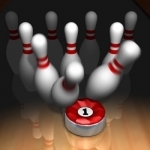
10 Pin Shuffle Pro Bowling
Games and Entertainment
App
10 Pin Shuffle Pro contains three great games in one, played in a realistic 3D environment! One of...
